Succulent propagation is one of my favorite parts of this succulent obsession passion! Propagation enables you to grow your succulent collection by harnessing the plants’ powers of reproduction. We’ve covered leaf propagation, stem cuttings and divisions. At looooong last, here is a guide to sowing succulent seeds and growing the seedlings into full succulent plants! Growing full plants from succulent seeds is the slowest form of succulent propagation, but it’s also an affordable way to get and grow some truly remarkable varieties that would cost a fortune to buy as fully grown and rooted plants.
How to Grow Succulents from Seeds
In this Post We'll Cover:
{Please note, some links in this post may be affiliate links to sites that pay me a small commission if you click on the link and make a purchase. This commission is at absolutely no cost to you. I only recommend products and companies that I have worked with and truly love! ~Kat}
Succulent propagation seems magical, doesn’t it? To be able to grow an entire plant from a single leaf or a bit of stem always makes me feel like I am getting to play with God’s toolbox. But growing succulents from seeds seems even more magical. How can a few motes of “dust” — succulent seeds are so small, they’re difficult to see — grow to form these beautiful plants? The answer is with a lot of patience and more care than succulents typically require. I confess — patience is not my strong suit. One of the many reasons I love succulents so much is that they look terrific from day one! No need to wait months or years for them to grow up or to bloom before you enjoy their exquisite, sculptural forms.
I am so fortunate to have a partner in this blog post, someone whose patience is an inspiration to me. Khun Anne is a member of my succulent-lovers Facebook group and an absolute gem. She has quite fallen in love with the magic of growing cactus and succulents from seeds and has photographed and documented her entire journey. She has generously shared her experience, photos and insights with the group and encouraged me to share them here, with you. You’ll enjoy following Khun Anne on Instagram, and we’d both love to have you join us on Facebook!. Thank you SO much, Khun Anne!
What Do Succulent Seeds Look Like?
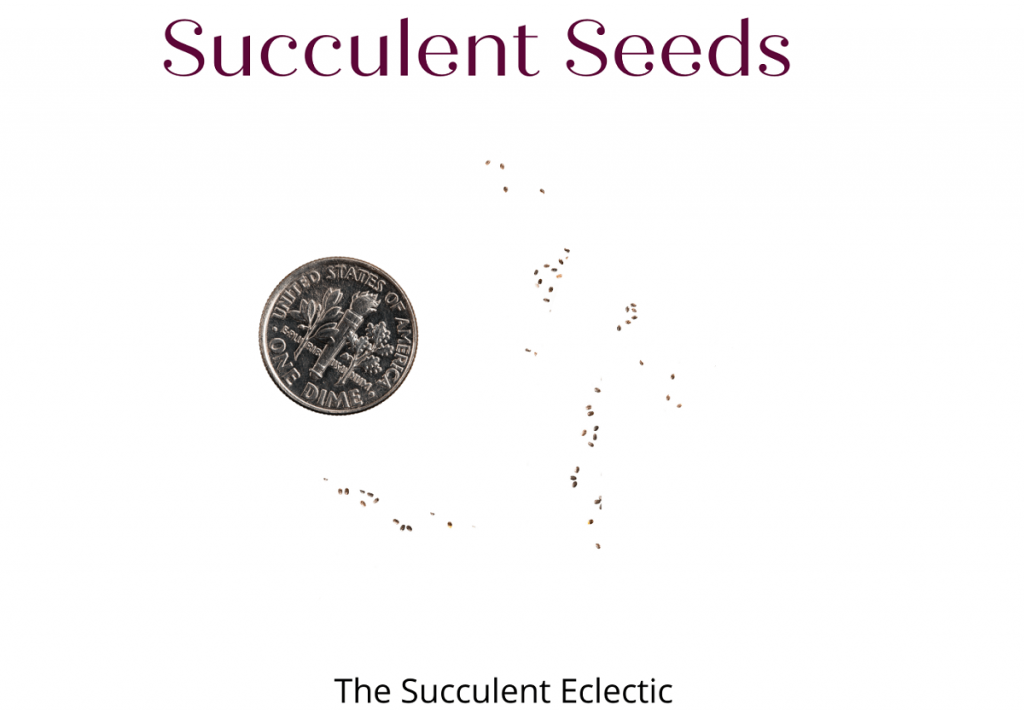
Succulent seeds are tiny. I mean, really, really tiny. The Sedum seeds seen here are far from the smallest of succulent seeds. Even people who frequently grow plants from succulent seeds can’t really tell you what do succulent seeds look like because they never see them. While some are the size of a tomato seed or even larger, most are barely specks. When you order a pack of succulent seeds, the packs may seem empty, or perhaps they seem to have just a trickle of dust or pepper. This is part of the reason that any post about how to plant succulent seeds must start with getting your seeds from a reputable source. If succulent seeds are so small you can barely see them, how can you know what was sent to you, or even if you received anything?
Sadly, there are plenty of unscrupulous people looking to make money from succulent enthusiasts while ripping them off. Selling fake succulent seeds is a favorite trick of these succulent scammers. Sometimes, they sell “seeds” for fantastical succulents that do not exist. When the succulent is real, they may ship dust, flour, paprika, ground pepper or weed seeds like dandelion seeds. Don’t take the risk. Purchase your succulent seeds only from reputable sellers with many positive reviews from other buyers. The following are cactus and succulent seed sellers on Etsy that I trust:
- WalawalaStudio – sells specialty succulent seeds on Etsy
- UnusualSeeds – specialty seed seller specializing in succulents
- SEEDVILLEUSA – specialty seed seller with a few succulent seeds
- WindowsillFairy – small specialty succulent seed seller
- GrandmaSeedsandGifts – specialty seed seller with a few succulents
- TheCactusKingdom – succulent specialists with some seeds
Supplies for Planting Succulent Seeds
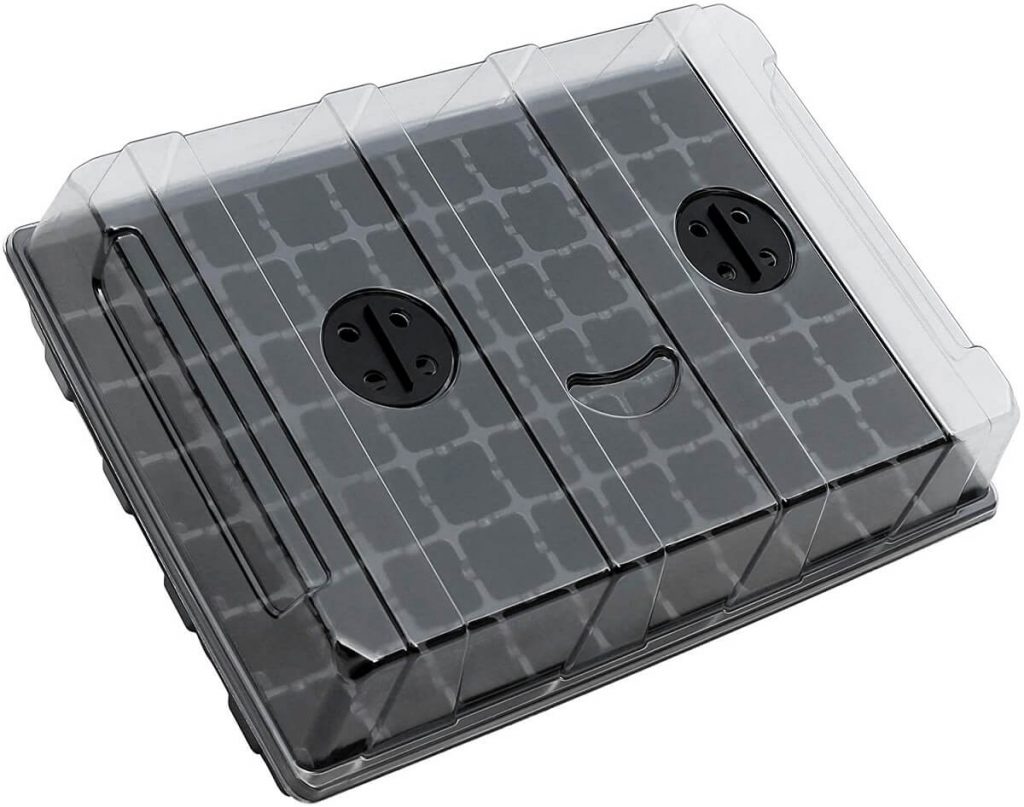
Before growing succulent seeds, you need the right supplies to sow them properly. While you can purchase seed-starting kits, trays and tools online, you can also use things you have around your home, as Khun Anne did. You will need the following succuplies:
- Plastic tray with drainage holes
- Clear cover for plastic container, or a large zip lock bag or plastic wrap
- Fast-draining succulent soil
- Pea gravel, pumice, chicken grit (optional)
- Succulent seeds!
Before sowing or planting succulent seeds, be certain that your container and cover are clean. You don’t want to introduce any mold spores or disease. Similarly, you may want to sterilize your potting mix, to be certain it contains no viable weed seeds, mold or mildew. You can sterilize your potting mix by spreading it out up to 3 inches deep in an oven-safe pan, covering it with aluminum foil and baking it at 300° F (150° C) for 30 – 45 minutes. Be sure to let the sterilized soil cool for several hours before use. (The reason we take this step with seed-starting and not with growing succulents is that pathogens and contaminants are everywhere. A growing succulent has built up a robust system that can shrug off problems that could swamp and kill a tiny seedling)
Preparing to Plant Succulent Seeds
Watch this awesome video Khun Anne created to demonstrate how she set up her seed starting container. She started with a plastic fruit container that had several, large drainage holes. She then laid a paper towel across the bottom of the container, to keep her soil and pebbles inside the container. Next, she added a layer of well-mixed Akadama, lava rocks, pumice and clay pebbles to improve the drainage. Over this, she layered her succulent soil mix. Take the time to break up any small clumps of soil that could be too heavy for the tiny seedlings to push up through. Take your time with this part. The seedling stems and roots will be tiny, so ensure they don’t meet large obstacles when they’re just starting out! You can use a sifter or a strainer, or just do it by hand. Then, even out the soil lightly tamp it down.
Whether you make your own seed starting container from handy objects at home or you buy a seed starter, you’ll want to follow the direction above to set it up. The next step is to set the seed starting tray is a basin of water. Let the water fully saturate the soil, then set it aside to fully drain. When the seed starting tray is no longer dripping, it’s time to start planting succulent seeds!
Planting Succulent Seeds
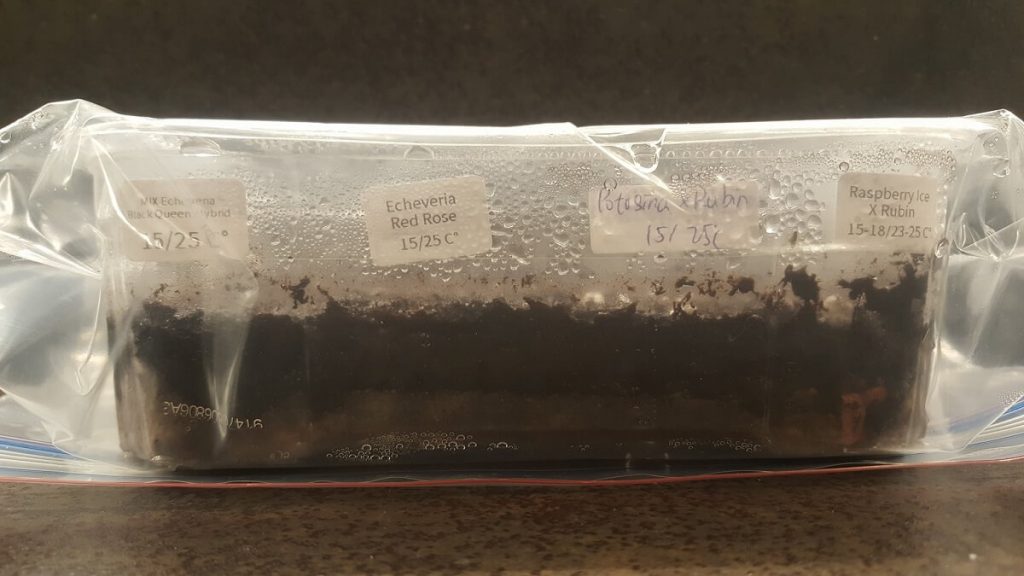
When planting succulent seeds, work in a well-lit room with no fan blowing. You don’t want those tiny seeds to blow away. The reason you wet the soil before sowing succulent seeds is so that the seeds stay in place once they reach the wet soil. Scatter the succulent seeds over the soil. Most will be so tiny, you cannot see them or feel them. (One method for handling such small seeds is to dampen the tip of a wooden toothpick. Touch the tip to your seeds, then to the soil.) Leave the tiny seeds on top of the soil, do not cover them. Some cactus seeds or Albucca seeds are quite a bit larger, almost the size of a pea. If you can hold a single seed in your fingers, then cover it with just a light dusting of soil. If the seeds are super small, just leave them on the surface of the soil. Be sure to label the seeds when you sow them.
Now, it’s time to cover your seed starting tray or to slip it inside the zip lock bag. This traps the water inside the container, creating humid conditions that will cause the succulent seeds to sprout. Twice each day, remove the cover to allow air circulation, then put it back in place.
Place the seed trays where they will get bright light during the days, but not in direct sun.
Conditions for Success Growing Succulent Seeds
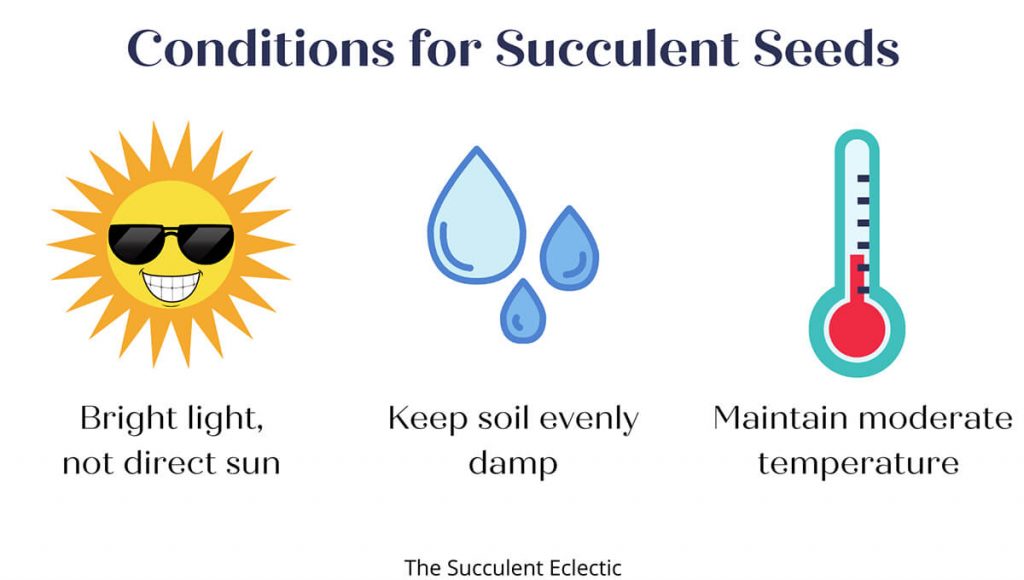
Now, it’s time to wait for the succulent seeds to germinate — when they wake up and begin to grow. Be sure the seed tray gets good light by day. Bright, indirect light, artificial light indoors or a grow light is best during daylight hours. Full sun would likely scorch or cook seedlings. Let them rest in the dark at night. Be sure to keep the soil evenly damp. Before the soil dries out, water again from the bottom, through the drainage holes.
Temperature is a key ingredient to having success sowing and growing succulent seeds. Maintain a consistent and moderate temperature for your seedlings. If no temperature information came with your seeds, aim for a temperature roughly 70° F (21° C). However, if there is a specific temperature recommended on your seed packet, be sure to follow that. Some varieties require a significant chill in order to germinate, while tropical varieties can require significant warmth. The specific temperatures are needed to signal to the seed that conditions are right for it to sprout.
How Long Does it Take to Grow Succulents from Seeds?
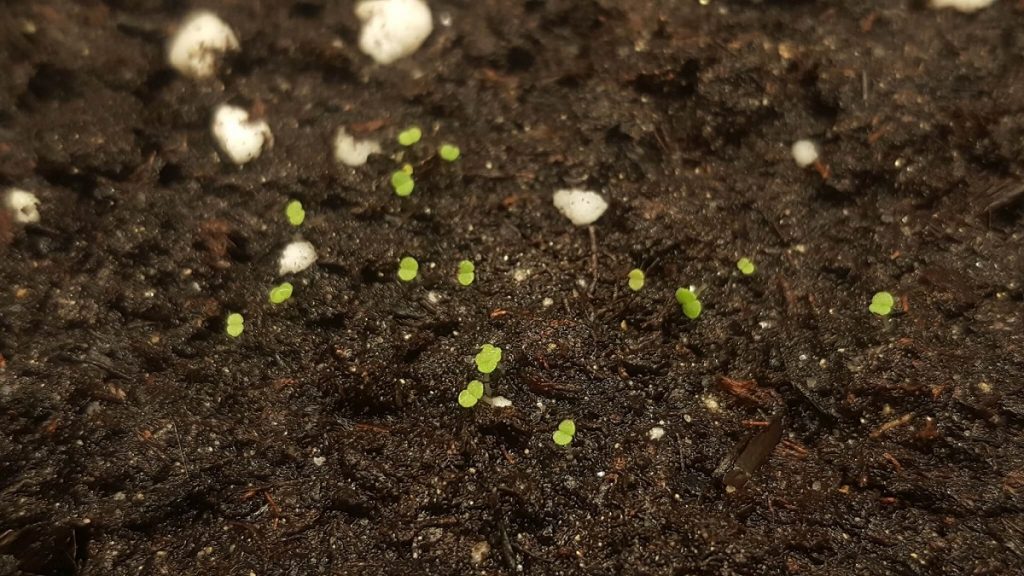
Everyone wants to know how long does it take to grow succulents from seed. This is really a two-part question. First, how long does it take for succulent seeds to germinate? Then, how long does it take for the baby sprouts to become real plants, right? You’re gonna love the answer to the first. Depending upon the variety, succulent seeds germinate within 3 days to 1 year. (Sorry!) Be sure to do some research before you choose your seeds!
Once your succulent seeds have germinated, they take roughly six months to reach the size of a 2-inch potted plant. Be sure to keep succulent seedlings in evenly moist soil. As the seedlings become small plants, slowly back off on the water you provide. Take a look at a few of Khun Anne’s seedlings at about the six month point:
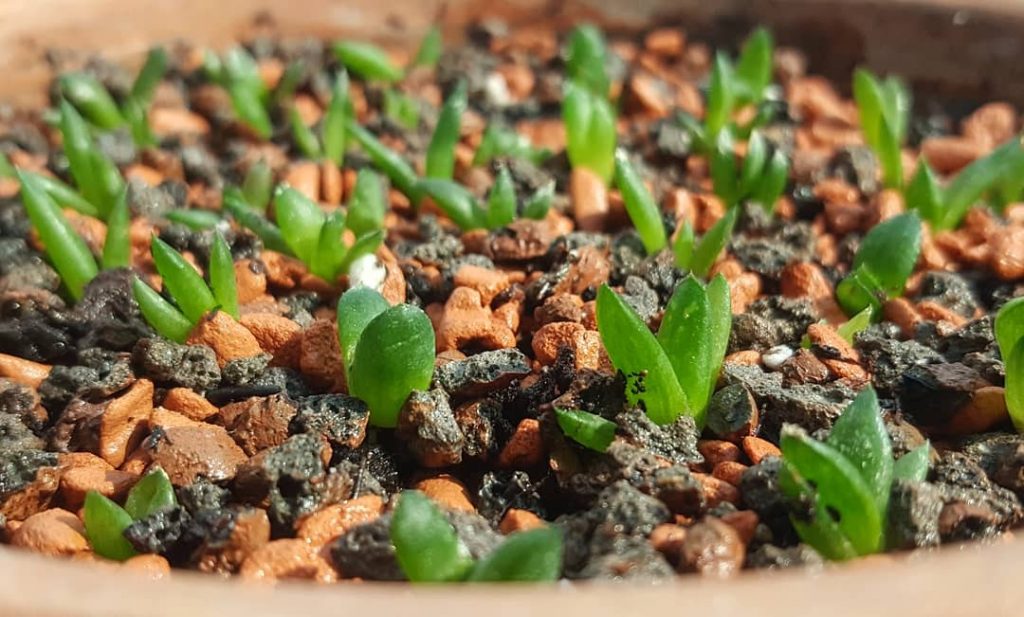
These Haworthia seedlings are so cheerful! Just remember to label your seeds when you sow them! 🙂
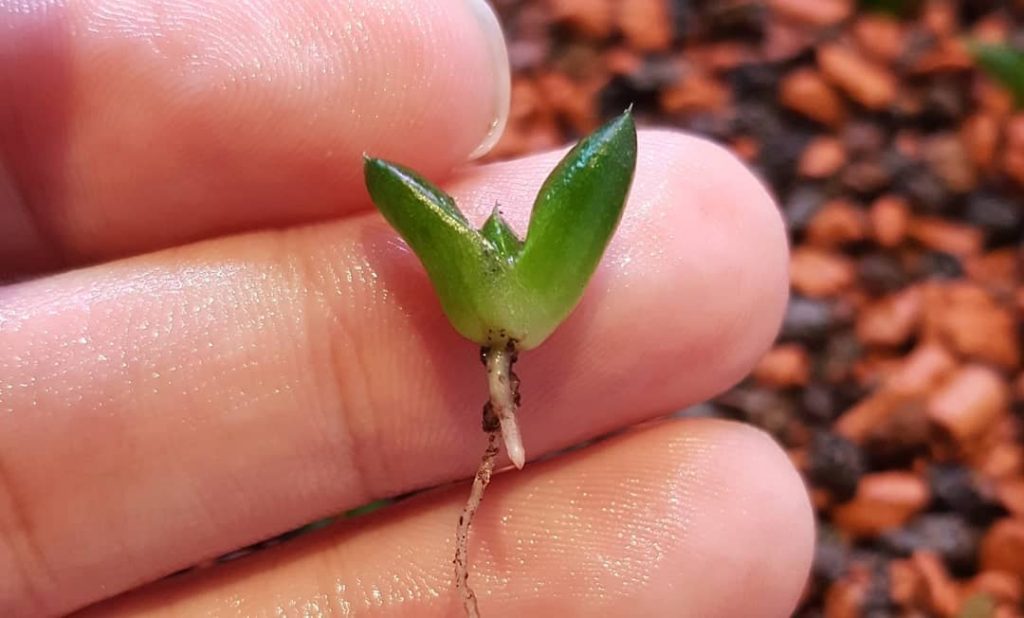
So small, but look at the robust roots!
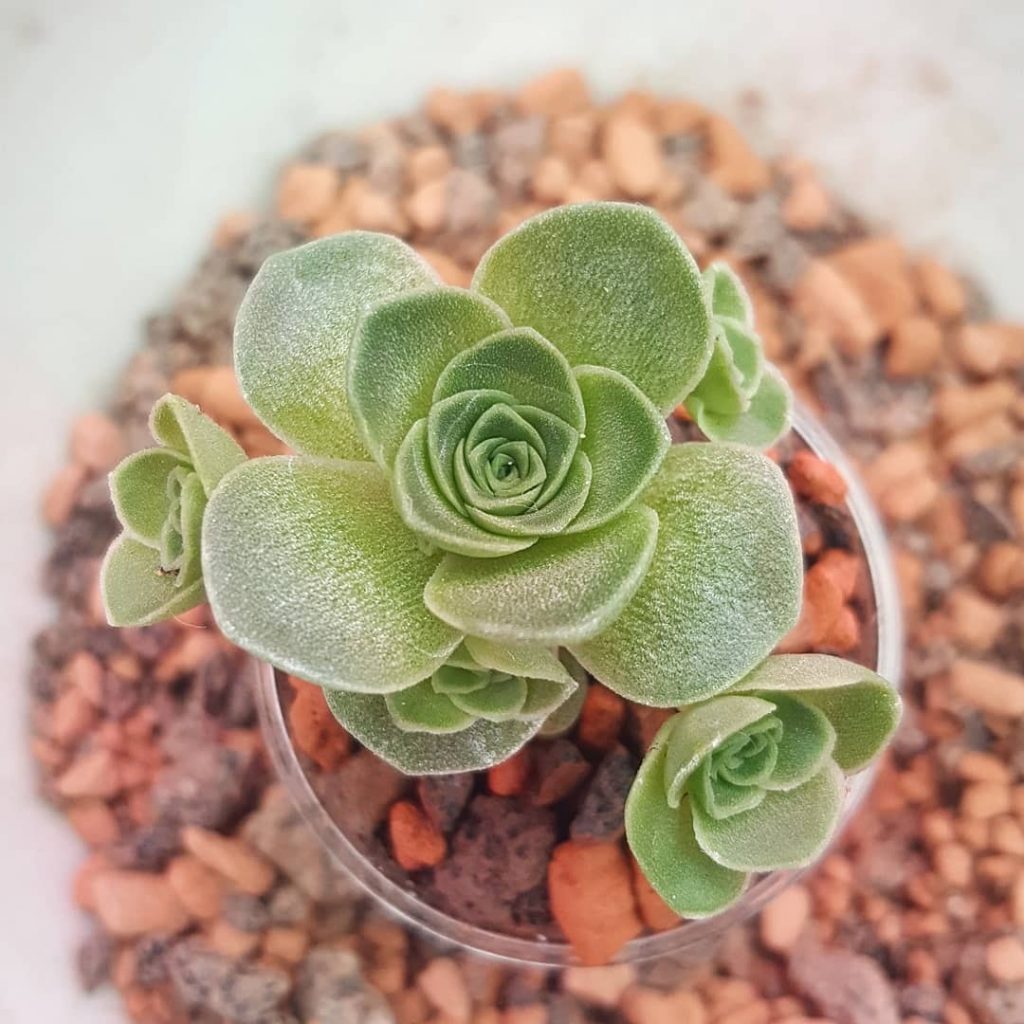
Many succulent lovers have fallen in love with the exquisite green roses of Aeonium greenovia dodrentalis, only to be frustrated in their attempts to find and buy the plant. Khun Anne is growing several from seeds. Lovely!
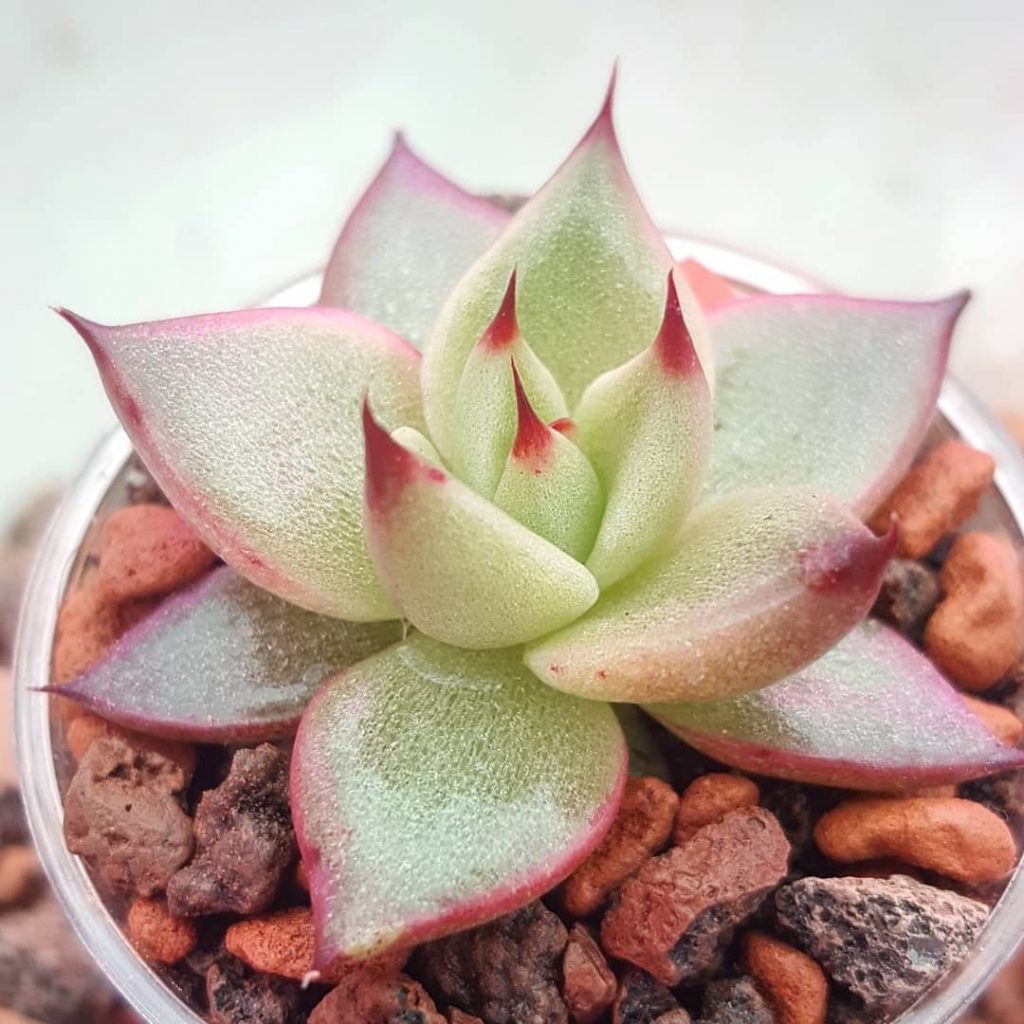
Can you imagine growing this exceptional beauty from a mere speck of a seed? While requiring a great deal of patience, sowing and growing succulent seeds can be richly rewarding. Khun Anne finds a unique joy in the entire process that she highly recommends.
How Succulents Reproduce in Nature
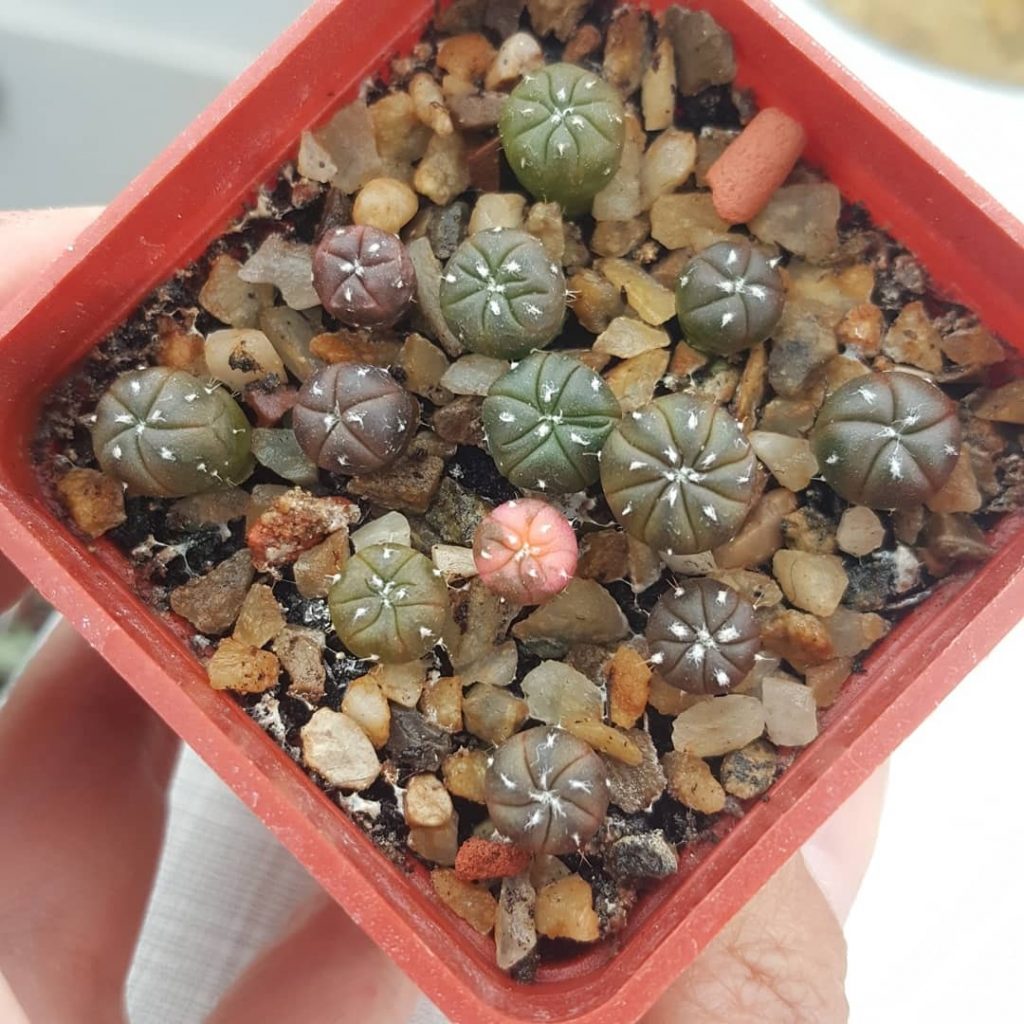
Aren’t these cactus seedlings adorable? Cactus seeds are typically large enough to be buried under a light dusting of soil. Otherwise, the process and care of the seeds and seedlings is just the same as with other succulents.
OK — I know what you’re wondering now. If succulent seeds take so much care, how can succulents possibly reproduce “in the wild”? Why don’t they die out? The trick is, that most cactus and succulents propagate themselves in nature by vegetative rather than sexual means. They break, the broken stem falls to the earth below and roots. This is a stem cutting. Or, they drop a few individual leaves, that root and grow into new plants. This is leaf propagation. Others create offsetsSucculent offsets are the baby succulents that form at the b... that can eventually break off from the mother plant, which is division. Because succulent seeds require such special conditions to grow and thrive, the plants rely on other methods of propagation. Vegetative reproduction makes more plants of a variety that has proven successful in the local conditions, (since it survived long enough to drop a leaf, form and offset, etc.). But the vast majority of variation, new characteristics and evolution come about through successful seed propagation..
What do you think? Are you eager to try your hand at sowing and growing succulent seeds? Or do you have any questions? I’d love to know! Please take a moment to leave me a comment and I will get right back to you! And please join me in thanking Khun Anne for making this blog post possible!
Because life is just better with succulents!
P.S. Please subscribe and enjoy my FREE course, 7 Steps to Succulent Success. Thanks so much!
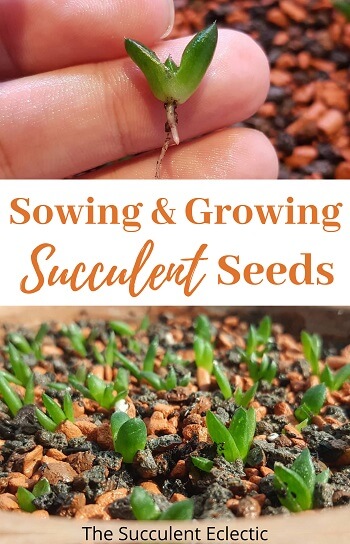
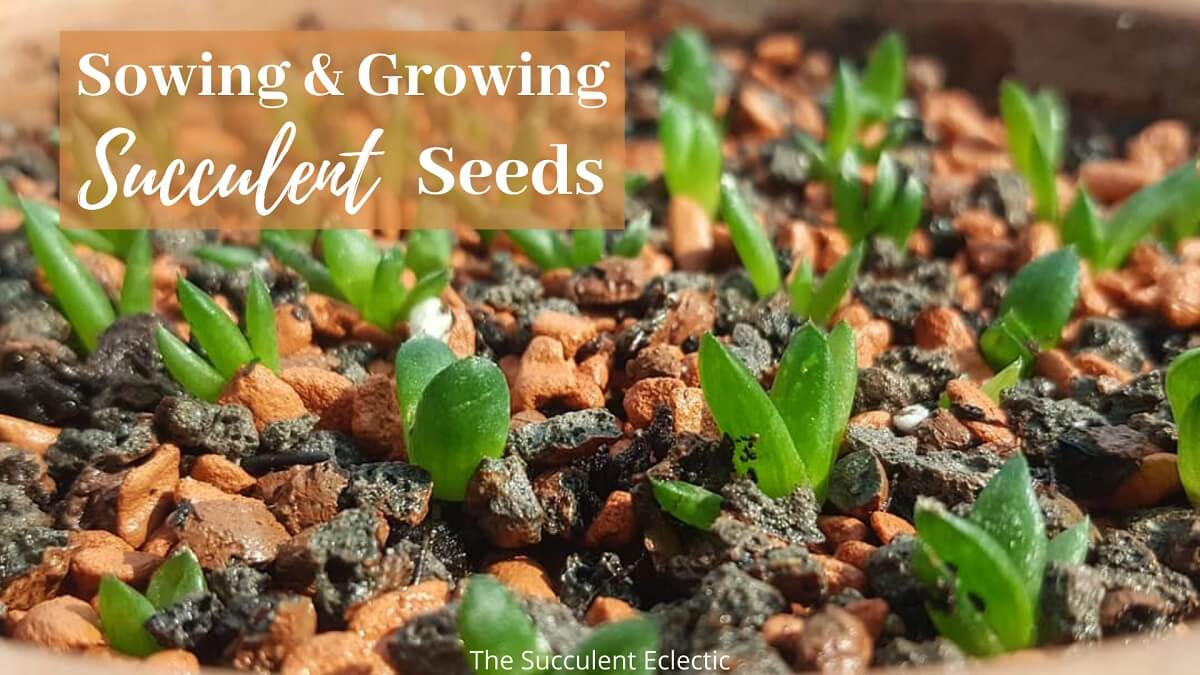
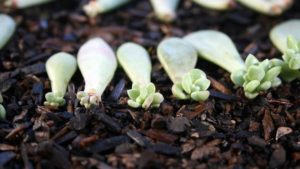
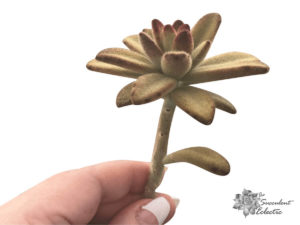
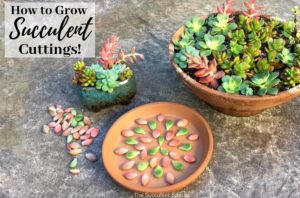
Interesting and informative…will try this method.
Thanks so much!
I hope you’ll enjoy it!
~Kat